
Brittany is a peninsula, historical country and cultural area in the north-west of modern France, covering the western part of what was known as Armorica during the period of Roman occupation. It became an independent kingdom and then a duchy before being united with the Kingdom of France in 1532 as a province governed as a separate nation under the crown.

The Duchy of Brittany was a medieval feudal state that existed between approximately 939 and 1547. Its territory covered the northwestern peninsula of Europe, bordered by the Atlantic Ocean to the west, and the English Channel to the north. It was also less definitively bordered by the river Loire to the south, and Normandy, and other French provinces, to the east. The Duchy was established after the expulsion of Viking armies from the region around 939. The Duchy, in the 10th and 11th centuries, was politically unstable, with the dukes holding only limited power outside their own personal lands. The Duchy had mixed relationships with the neighbouring Duchy of Normandy, sometimes allying itself with Normandy, and at other times, such as the Breton–Norman War, entering into open conflict.
Constance was Duchess of Brittany from 1166 to her death in 1201 and Countess of Richmond from 1171 to 1201. Constance was the daughter of Duke Conan IV by his wife, Margaret of Huntingdon, a sister of the Scottish kings Malcolm IV and William I.
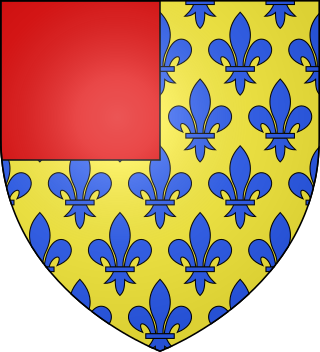
Guy of Thouars was the third husband of Constance, Duchess of Brittany, whom he married in Angers, County of Anjou between August and October 1199 after her son Arthur of Brittany entered Angers to be recognized as count of the three countships of Anjou, Maine and Touraine. He was an Occitan noble, a member of the House of Thouars. He is counted as a duke of Brittany, jure uxoris, from 1199 to 1201.

Francis II was Duke of Brittany from 1458 to his death. He was the grandson of John IV, Duke of Brittany. A recurring theme in Francis' life would be his quest to maintain the quasi-independence of Brittany from France. As such, his reign was characterized by conflicts with King Louis XI of France and with his daughter, Anne of France, who served as regent during the minority of her brother, King Charles VIII. The armed and unarmed conflicts from 1465 to 1477 and 1484–1488 have been called the "War of the Public Weal" and the Mad War, respectively.
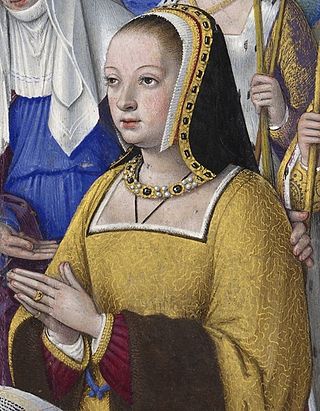
Anne of Brittany was reigning Duchess of Brittany from 1488 until her death, and Queen of France from 1491 to 1498 and from 1499 to her death. She was the only woman to have been queen consort of France twice. During the Italian Wars, Anne also became Queen of Naples, from 1501 to 1504, and Duchess of Milan, in 1499–1500 and from 1500 to 1512.

Châteaubriant is a town in western France, about 350 km (220 mi) southwest of Paris, and one of the three sous-préfectures of the Loire-Atlantique department. Châteaubriant is also situated in the historical and cultural region of Brittany, and it is the capital of the Pays de la Mée.

Tri Yann is a French band from Nantes who play folk rock music drawing on traditional Breton folk ballads.

Claude of France reigned as Duchess of Brittany from 1514 until her death in 1524 and was Queen of France from 1515 to 1524 as the wife of King Francis I. She was the eldest daughter of King Louis XII of France and Duchess Anne of Brittany.

The House of Rohan is a Breton family of viscounts, later dukes and princes in the French nobility, coming from the locality of Rohan in Brittany. Their line descends from the viscounts of Porhoët and is said to trace back to the legendary Conan Meriadoc. Through the Porhoët family, the Rohans are related to the Dukes of Brittany, with whom the family intermingled again after its inception. During the Middle Ages, it was one of the most powerful families in the Duchy of Brittany. The Rohans developed ties with the French and English royal houses as well, and they played an important role in French and European history.
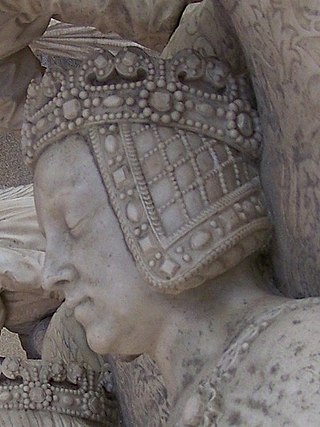
Margaret of Foix was Duchess of Brittany from 1474 to 1486 by marriage to Duke Francis II.

The Battle of Saint-Aubin-du-Cormier took place on 28 July 1488, between the forces of King Charles VIII of France, and those of Francis II, Duke of Brittany, and his allies. The defeat of the latter signalled the end to the "guerre folle", a feudal conflict in which French aristocrats revolted against royal power during the regency of Anne de Beaujeu. It also effectively precipitated the end of the independence of Brittany from France.

Margaret of Brittany was a duchess consort of Brittany. She was the elder of the two daughters of Francis I, Duke of Brittany, by his second wife, Isabella of Scotland.
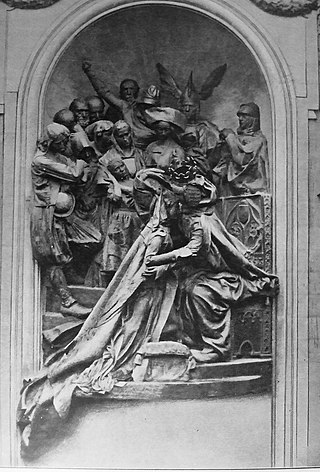
The union of the Duchy of Brittany with the Crown of France was the culmination of a political process begun at the end of the 15th century in the wake of the Mad War. It resulted in the Edict of Union of 13 August 1532 and the incorporation of the duchy into the Crown lands of France, a critical step in the formation of modern-day France.

Anne of Brittany was the object of representations very early on. The royal propaganda of Charles VIII and, later on, of Louis XII idealized her as a symbol of the perfect queen, on the union between the kingdom and the duchy, and of the return to peace. Maximilian's Austria having been evicted from the marriage, had a different perspective on the events. Throughout the centuries, historians and popular imagery forged a very different Anne of Brittany, attributing her physical or psychological characteristics or actions that are not necessarily verifiable through historical data.

Alan Simon is a French folk-rock musician and composer, best known for his rock operas performed with noted rock musicians guesting. Simon is associated with Breton Celticism, and his most ambitious works are typically on themes linked to Celtic myth and history. Simon has also branched out into film-making.

Cécile Corbel is a French and Breton singer, harpist, and composer. She has released five albums of original music and worked for Studio Ghibli as a composer for its 2010 film, The Borrower Arrietty. Corbel sings in many languages including French, Italian, Breton, and English and has done songs in Spanish, German, Japanese, Irish, and Turkish. Her lifelong partner is songwriter Simon Caby, who is also her co-composer.

Pierre Le Baud or Lebaud was a French clergyman and historian known for his writings on the history of Brittany.
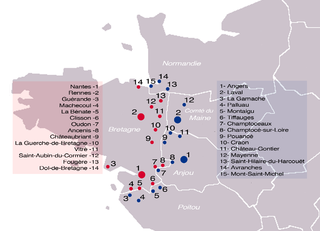
The French–Breton War lasted from 1487 to 1491. The cause of this war was the approaching death of the Breton Duke Francis II of Brittany, who had no clear successor. If not resolved, this meant a resumption of issues from a previous War of the Breton Succession (1341–1364), which had rival claimants allying with England or France, resulting in an ambiguous peace treaty that failed to prevent future succession disputes.


















